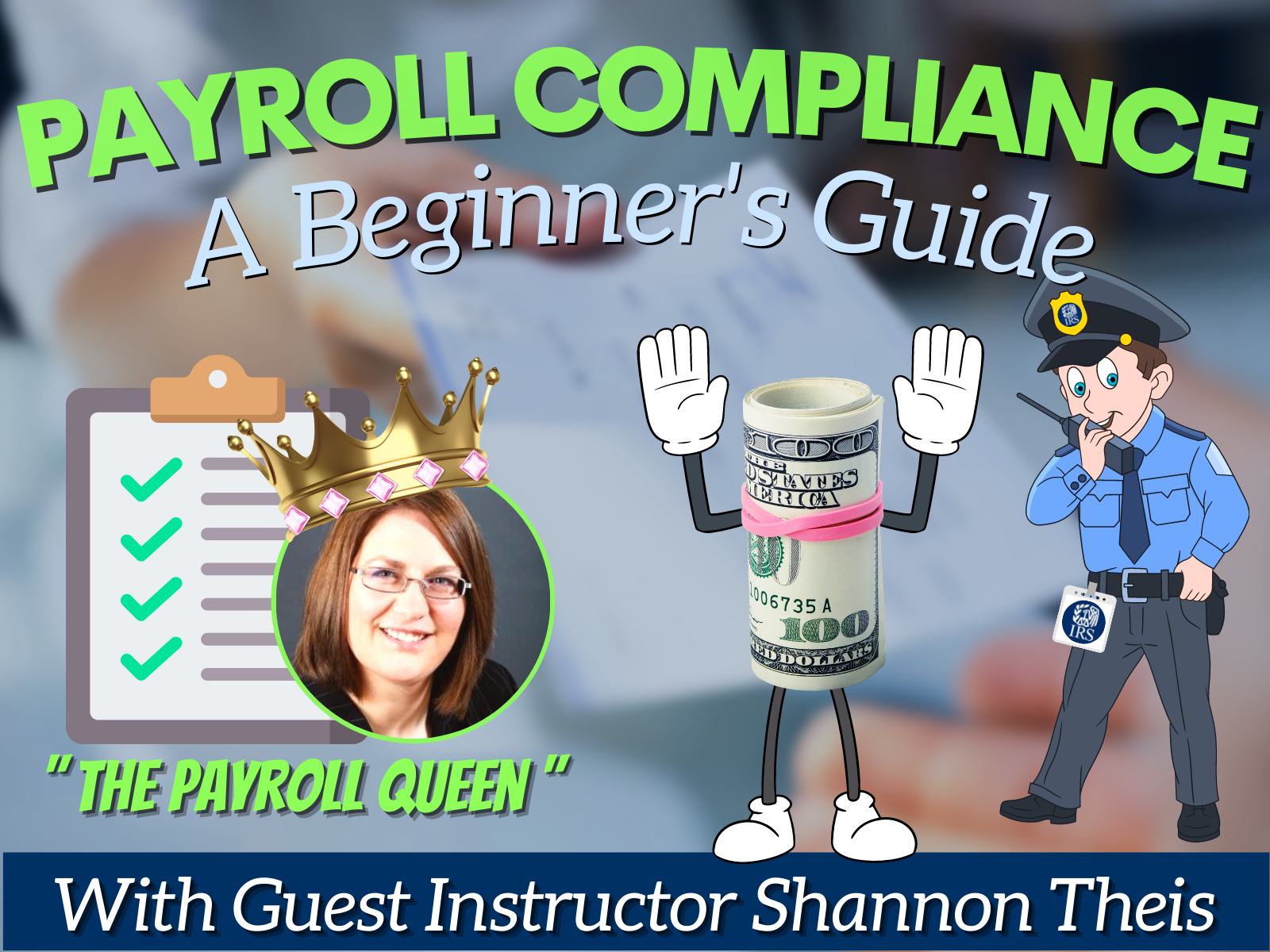Payroll Compliance: A Beginners Guide to Payroll

Course Description:
In this class, Shannon Theis, a payroll expert with almost 20 years’ experience, is going to give you an over-the-shoulder look at the basics of payroll - who and when you have to pay, whether to pay hourly or salary, and the differences between employees and contractors.
QuickBooks Online’s built-in Payroll may take all the work out of paying employees and submitting payroll taxes, but it still needs to be set up properly.
Before you even begin, it’s mission-critical to develop consistent company policies for wages and salary, paid time off, and employee benefits.
- How do you decide how much to pay, and if an employee should be paid hourly or salary? What defines an employee vs. a contractor? How do you develop PTO policies for sick leave, vacation leave, and unpaid time off?
- What are contributions, deductions, and garnishments, especially all those with the weird initials, like FUTA, SUTA, SUI, and WC?
- How are health insurance benefits, retirement plans, and other fringe benefits managed?
- How do you reimburse employees for mileage and out-of-pocket expenses?
- When it’s time to pay your payroll taxes, how do you know if you’re supposed to pay quarterly, monthly, or with each payroll run?
We’ll look at where to find answers and articles on compliance, where to find your payroll tax information (hint: it’s not in payroll!), and how to navigate the different sections of QBO you’ll need to use while working through common payroll issues.
Lastly, we’ll take a look at the most common payroll errors Shannon sees as a payroll restoration specialist, how best to avoid them, and what to do if you find out you’ve made errors.
In this Payroll Compliance class, you’ll learn about:
-
Salary vs Hourly compensation
-
Employees vs. contractors
-
PTO: Sick pay, vacation pay, holiday pay
-
Tax Deductions, Contributions, and Garnishments
-
Benefits including healthcare and retirement
-
Reimbursements for out-of-pocket expenses
-
How to pay your payroll taxes
After completing this course, you will be able to:
-
Understand what payroll is and how you use it in your business
-
Create payroll policies for state and federal compliance
-
Address common problems
)
)